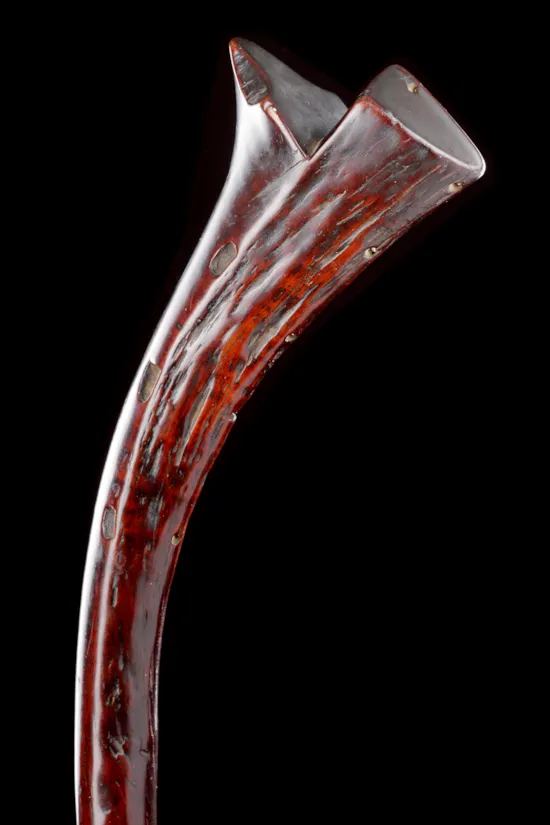A Polynesian Spurred ‘Gata’ or ‘Sali’ Fighting Club of ‘Gunstock’ Form
A Polynesian Spurred ‘Gata’ or ‘Sali’ Fighting Club of ‘Gunstock’ Form
Wood
Superb colour and patina
Fiji
18th - 19th Century
SIZE: 97.5cm long - 38¾ ins long
Wood
Superb colour and patina
Fiji
18th - 19th Century
SIZE: 97.5cm long - 38¾ ins long
A Polynesian Spurred ‘Gata’ or ‘Sali’ Fighting Club of ‘Gunstock’ Form
Wood
Superb colour and patina
Fiji
18th - 19th Century
SIZE: 97.5cm long - 38¾ ins long
Wood
Superb colour and patina
Fiji
18th - 19th Century
SIZE: 97.5cm long - 38¾ ins long
These impressive war clubs are said to be named after the clawed sali flower of one of the wild banana-like plants which grow on the Pacific Islands of Fiji. They have longer, broader cheeks and a more highly developed crest or spur than gata clubs although they were used in the same way, being designed to slice and cut through bone rather than smash and shatter it.
Fijian clubs of this quality were expensive products made by specialist craftsmen called ‘Matai’. Using stone adzes they were commissioned by chiefs to carve particular weapons, and were paid with feasts and property presentations. Sometimes these weapons were not made for immediate use, but intended for formal exchange ceremonies between communities and would figure prominently among the goods changing hands.
Fijian clubs of this quality were expensive products made by specialist craftsmen called ‘Matai’. Using stone adzes they were commissioned by chiefs to carve particular weapons, and were paid with feasts and property presentations. Sometimes these weapons were not made for immediate use, but intended for formal exchange ceremonies between communities and would figure prominently among the goods changing hands.
Ex Private collection
A Polynesian Spurred ‘Gata’ or ‘Sali’ Fighting Club of ‘Gunstock’ Form

SOLD














YOU MAY ALSO LIKE

